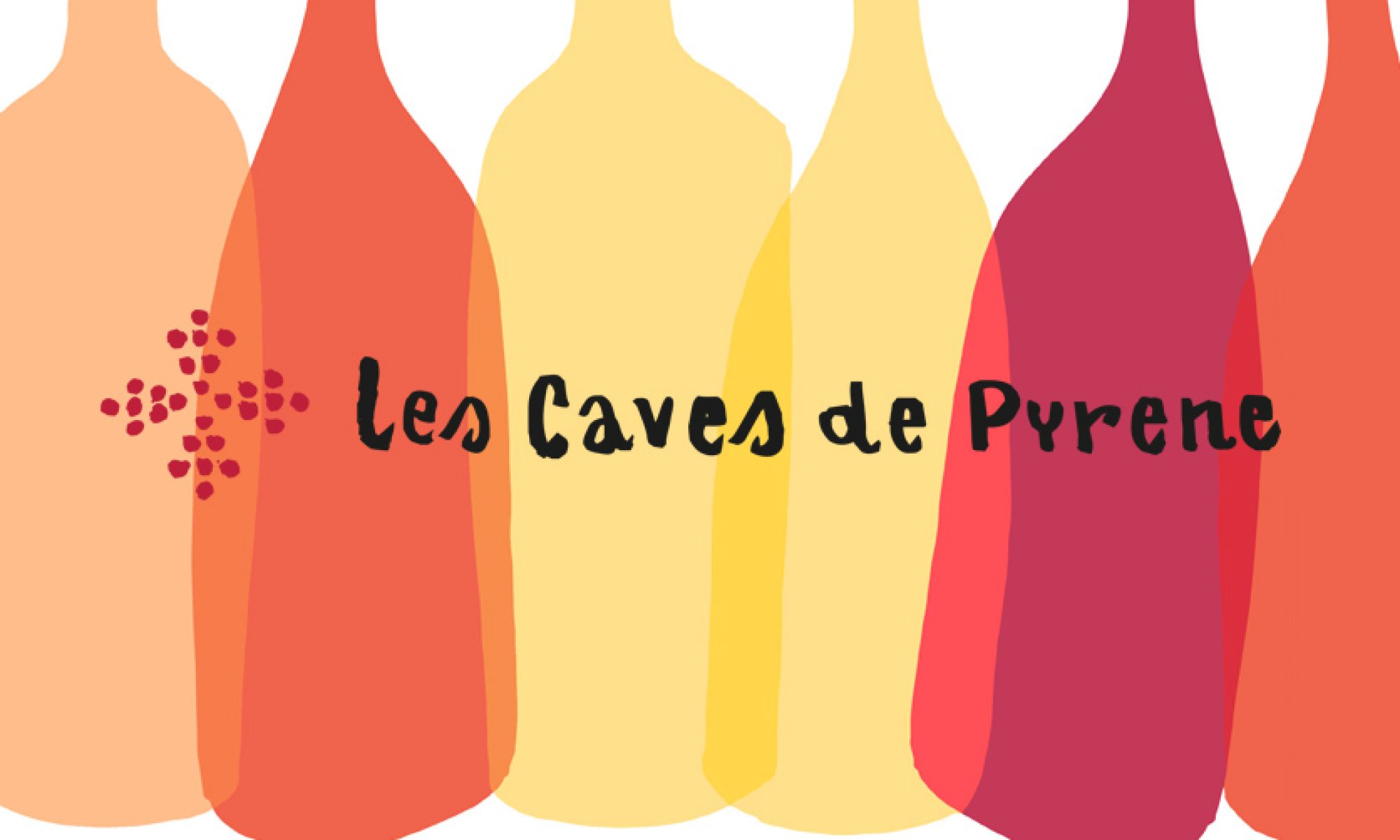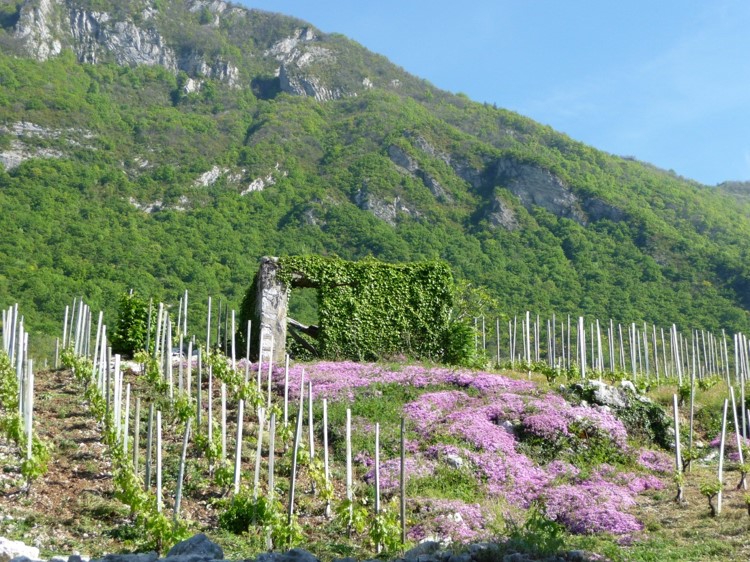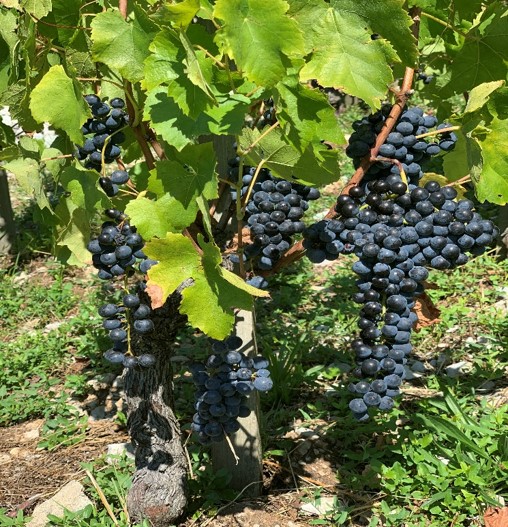We do like Mondeuse (with apologies to The Boomtown Rats)
Louis Magnin is the third generation of the domaine of some 8-hectares spread between Arbin and Montmélian. Organic since 2009, he also started working biodynamically in certain vineyard parcels from 2007 after he attended a conference in Switzerland with friend Michel Grisard.
When in Savoie, the search for the best Mondeuse will lead to the village of Arbin, the home of this most intriguing grape (more on its origins below). In Arbin, Louis Magnin is a true specialist of this variety and 55% of his domaine is devoted to Mondeuse, all planted within the confines of Arbin in the sector known as the “Combe de Savoie”. A further 30% of the vineyards are dedicated to the Roussanne grape, known locally as “Bergeron”, all of which are situated in the neighbouring village of Montmélian, equally renowned for its affinity to the Bergeron variety. The remaining 15% of the holdings are Altesse and Gamay.
Louis and his wife, Béatrice, as mentioned, practice organic viticulture with some biodynamic principles. The vineyards largely face south-southeast and are planted on steeply-sloping hillside sites on clay and limestone mix with an overlay of scree. Almost all vineyard work must be done by hand.
The resulting wines have an impressive fullness and energy but most of all have great ageing potential and deserve to be drunk after a few years in the cellar.
Louis and Béatrice are now in the process of pre-retiring, their last vintage being 2022, but they have plenty of reserves of the most recent vintages (as well as some older gems) and are yet to bottle the 2021 and 2022.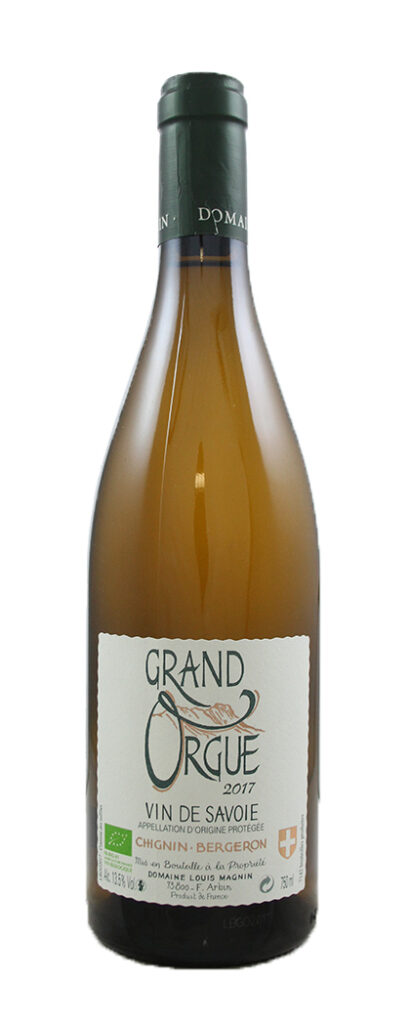 The Chignin Bergeron Grand Orgue is their prestige white cuvée. The grapes for this selection come from two parcels of the oldest vines of the estate. Stylistically, the “Grande Orgue” is ripe and rich without giving up the discipline that makes these wines of the Savoie so compelling. The aromas speak of wild flowers and honeysuckle and warm apricot while the palate is marked by notes of anise preceding a penetrating finish of bristling minerality.
The Chignin Bergeron Grand Orgue is their prestige white cuvée. The grapes for this selection come from two parcels of the oldest vines of the estate. Stylistically, the “Grande Orgue” is ripe and rich without giving up the discipline that makes these wines of the Savoie so compelling. The aromas speak of wild flowers and honeysuckle and warm apricot while the palate is marked by notes of anise preceding a penetrating finish of bristling minerality.
The harvest is entirely manual; grapes are pressed whole and racked off the heavy lees for the alcoholic fermentation; the malolactic follows naturally and the wine is left on fine lees in stainless steel until bottling. No sulphur is added during this process except for a small dose bottling.
We have two examples of Arbin Mondeuse from Magnin. The Mondeuse vieilles vignes is from 80-year-old vines on red clay (glacial) soils. The grapes are fully destemmed and left in stainless steel for 15 days before ageing in the same for a further 18 months on their fine lees.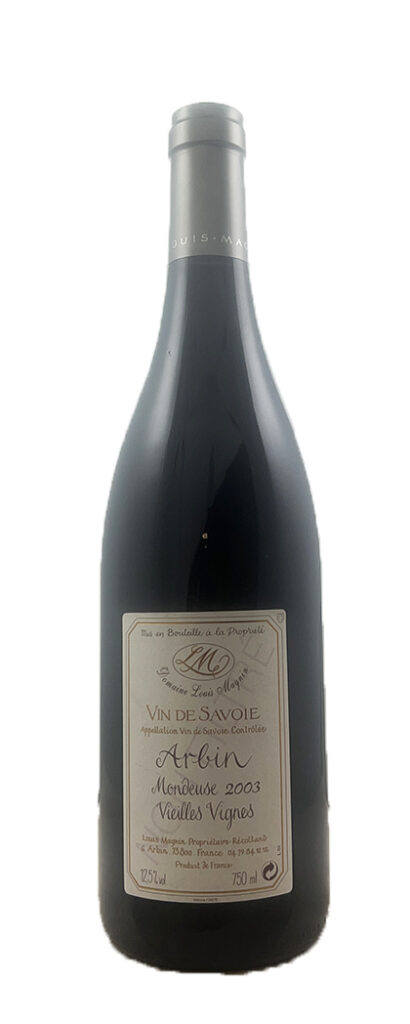
Mondeuse La Brova is from a small parcel of old vines on ancient clays. The grapes are harvested by hand and completely destemmed before being put into vats. After a long maceration of 30 days, the wine is placed in used barrels for a period of 36 months. A classic Mondeuse, the nose is pointed with a refreshing cherry fruit. It is open on the palate, and there is a slightly bitter stone-fruit note and a lively, fresh acidity. Juicy and satisfying, this is a wine of substantial structure. There is an earthiness by way of tobacco and dried herbs, and a subtle kick of white pepper, chocolate, and darker fruits of plum, blackberry, and black raspberry reminiscent of the notes you get in a Northern Rhône Syrah.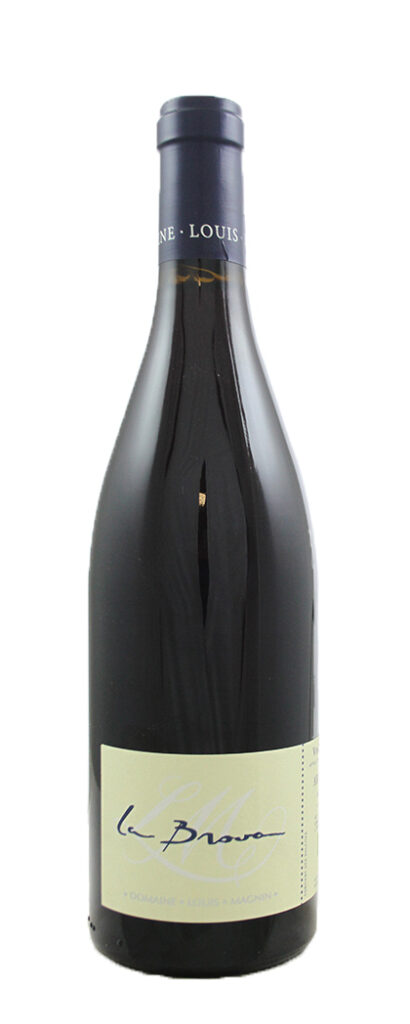
A note on Mondeuse (Noire). This is an ancient red wine grape variety native to eastern France, associated specifically with the Savoie region.
The origin of the name has spawned several theories. I am indebted to Wikipedia for the following information on the origin of the name.
- The Franco-Provencal terms for pruning émonderand monder, which could be a reference to the fact that Mondeuse noire vines begin shedding their leaves before the grapes are harvested; or
- the words moduseand moda, which have been historically applied to grape varieties that yield a high proportion of must; or
- the term mal doux, which means “badly sweet” and may be a reference to the bitter flavours of Mondeuse noire berries when sampled off the vine. To this day, the synonym Maldouxis still associated with Mondeuse noire in wine regions such as Jura in eastern France.
Most ampelographers believe that Mondeuse noire is indigenous to the Dauphiné region of southeastern France. An early theory, popularized in 1887 by French ampelographer Pierre Tochoin, is that Mondeuse noire could be the Ancient Roman grape Allobrogica described by Pliny the Elder and Columella as well as the 2nd century Greek writer. Ampelographers disagree about the identity of this grape, which grew widely in the land of the Allobroges after whom it is named for, with other theories speculating that the grape was instead the ancestor of Pinot Noir or Syrah.
The first mention of Mondeuse noire, under the synonym Maldoux, dates to a February 3, 1731 decree from the parliament of Besançon in the Franche-Comté. This decree mandated that all plantings of several grape varieties, including Maldoux, Enfariné, Foirard Noir etc that were planted after 1702 had to be uprooted and replaced with cereal crops. Under the name Mondeuse noire, the grape was noted in records from 1845 growing in the valley of the Isère.
A classic Mondeuse wine is aromatic with a deep purple colour, with plenty of acidity and considerable tannins. The bouquet is powerfully aromatic, with notes of sour cherries, damson plums, pencil lead and an invigorating hint of black pepper. Among the finest, most expressive examples are those (as we have noted) from the Savoie village of Arbin where Louis Magnin farms.
The grapes tend to ripen mid-season and do best on stony soils with a high clay content for water retention.
It has long been suggested that Mondeuse noire is related to Syrah, and this was confirmed by DNA profiling conducted by prominent ampelographer Jose Vouillamoz. This relationship carries through into the two varieties’ wines, which have in common their rich pigmentation and spicy aroma. For years, there was confusion about whether Mondeuse was related to the Italian Refosco grape. Apparently, it is not though taste-wise, some wine writers have commented on the “Italianate” nature of the variety.
2017 Chignin Bergeron “Grand Orgue”
2017 Arbin Mondeuse “La Brova”
2003 Mondeuse vieilles vignes ~ on allocation
1996 Mondeuse vieilles vignes~ on allocation
*
Interested in finding out more about the wines of Domaine Magnin? Contact us directly:
shop@lescaves.co.uk | sales@lescaves.co.uk | 01483 538820

